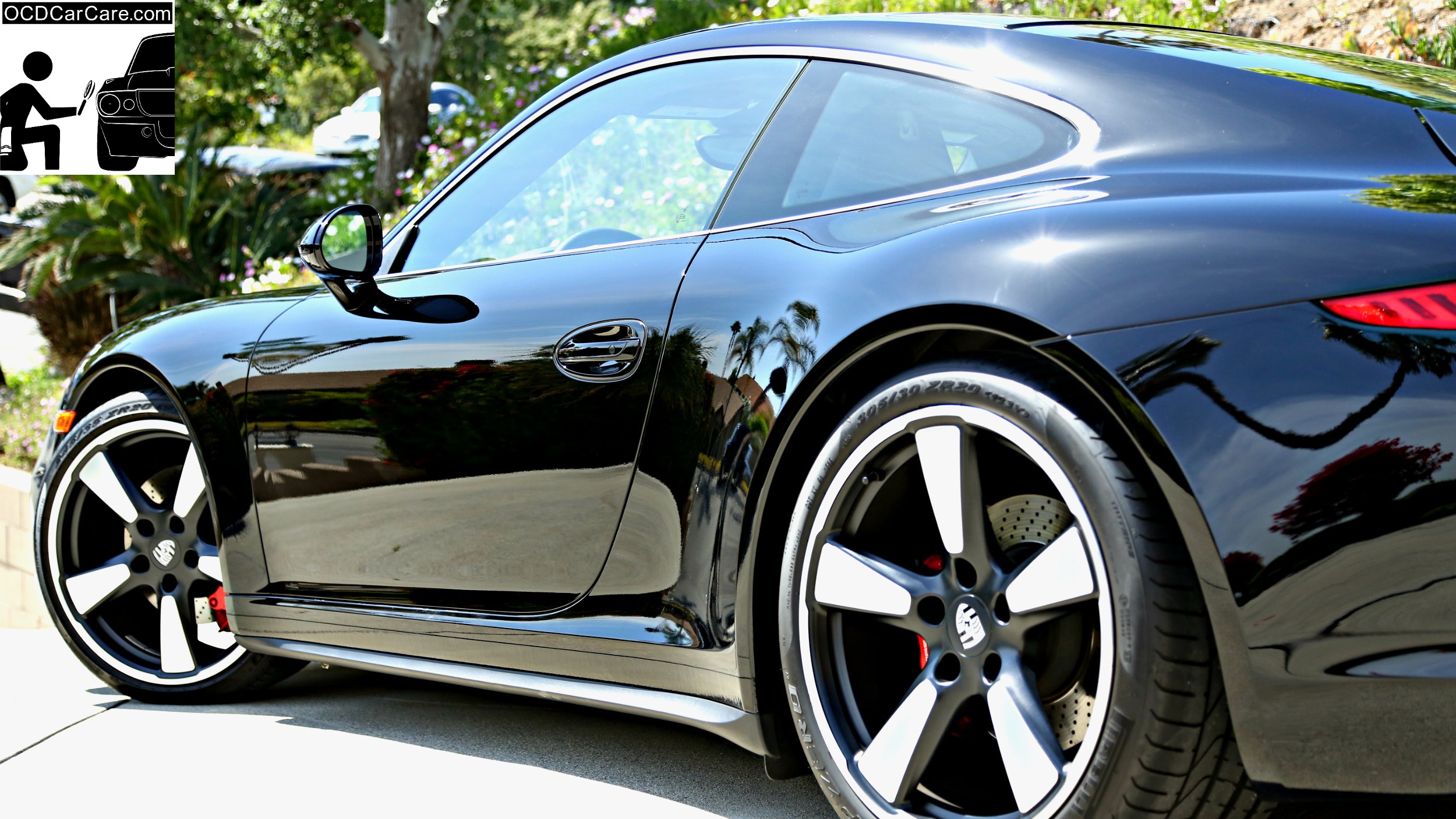How Detailing Porcelain Finish Enhances the Durability of Your Automobile's Paint
Ceramic coating has actually emerged as an essential modern technology in automobile detailing, supplying a resilient service for maintaining the integrity of your car's paint. Comprehending the ins and outs of just how ceramic coating works and its advantages over traditional wax can provide useful insights for car owners.
What Is Ceramic Coating?
Recognizing the protective benefits of ceramic finishing begins with acknowledging its structure and performance. Ceramic covering is a liquid polymer related to the external surfaces of vehicles, mostly designed to improve and shield vehicle paint. The vital component of this finishing is silicon dioxide (SiO2), which is stemmed from natural materials like sand. This compound develops a solid chemical bond with the manufacturing facility paint, producing a safety layer that is both durable and hydrophobic.
The coating's application involves careful preparation of the vehicle's surface area, which must be without pollutants, scrapes, and blemishes to make certain optimal bond. As soon as applied, the ceramic finish remedies to create an inflexible guard that can withstand various ecological elements, including UV rays, chemical stains, and oxidation.
In addition, ceramic finishings are not simply surface-level therapies; they permeate the paint to give a long lasting defense. This performance extends the lifespan of the lorry's visual appeals while keeping its value with time. Recognizing these basic aspects of ceramic coating is essential for auto proprietors looking for efficient solutions for paint preservation and enhancement.
Advantages of Ceramic Layer
The benefits of ceramic coating extend much beyond its basic protective attributes - Conforti Auto and Marine Detailing Ceramic Coating. Among one of the most significant advantages is its ability to give phenomenal toughness. Unlike typical wax or sealants, ceramic coverings develop a strong bond with the automobile's paint, allowing it to stand up to ecological threats such as UV rays, acid rainfall, and roadway salt. This strength dramatically decreases the risk of paint damages, maintaining the vehicle's visual appeal.
Additionally, ceramic finishes offer hydrophobic residential properties, implying they drive away water and contaminants. This particular not only makes the automobile less complicated to clean yet also lessens the regularity of cleaning, saving both time and initiative for car proprietors. The glossy surface developed by the finish protects against dust and crud from sticking, boosting the car's general tidiness.
In addition, ceramic finishings improve the deepness and clarity of the paint, providing lorries a shiny coating that is aesthetically striking. This aesthetic improvement further adds to preserving the cars and truck's resale worth, as a well-kept outside is a significant marketing factor for prospective customers. Overall, the benefits of ceramic coating make it a rewarding financial investment for any person seeking to protect and enhance their automobile's paintwork.
How Ceramic Finishing Works

The finish's hydrophobic buildings fend off water and dirt, avoiding the build-up of grime externally. This not just makes the vehicle easier to clean but additionally reduces the chance of scratches and swirl marks triggered by traditional washing techniques. The ceramic layer acts as a shield against UV rays, which can cause fading and oxidation over time.
Once healed, the covering shows amazing resistance to chemicals, including roadway salts, bird droppings, and tree sap, which can otherwise harm the paint. The longevity of ceramic finishings can last for a number of years, relying on variables such as maintenance and ecological problems. Generally, the chemical bonding process of ceramic finishings provides a durable defense that maintains the stability and appearance of a vehicle's paintwork.
Contrasting Ceramic Covering to Wax
Comparing ceramic coating to anchor typical wax discloses significant distinctions in performance and long life. While both products aim to safeguard a lorry's paint, their structures and resilience set them apart. Wax, generally made from all-natural carnauba or artificial materials, gives a short-term guard that normally lasts just a few weeks to a couple of months, depending upon ecological conditions and upkeep regimens.
In comparison, ceramic layers are sophisticated remedies composed of not natural materials that bond chemically with the automobile's paint. This develops a durable, semi-permanent layer of protection that can endure for a number of years. Because of this, ceramic finishings provide exceptional resistance to UV rays, news chemical discolorations, and physical abrasion, dramatically minimizing the danger of oxidation and fading.
Additionally, the hydrophobic homes of ceramic layers ensure that water grains up and rolls off the surface area, making it much more challenging for dirt and grime to adhere. This convenience of cleaning is a significant benefit over wax, which can bring in dirt and call for constant reapplication. Eventually, for vehicle owners looking for long-lasting defense and boosted aesthetic appeal, ceramic coatings present an extra efficient alternative to traditional wax items.
Maintenance Tips for Long Life
Appropriate upkeep is necessary for making best use of the durability of a ceramic finishing. Use a pH-balanced automobile shampoo to prevent deteriorating the finishing, and stay clear of automated car washes with harsh brushes that can cause micro-scratches.
To maintain the hydrophobic buildings of the ceramic covering, think about applying a maintenance spray or booster specifically created for ceramic finishes every few months. This will strengthen the safety layer and boost water beading.
Additionally, prevent exposing the covered surface area to extreme ecological conditions whenever feasible. Auto parking in shaded areas or making use of an automobile cover can protect against UV damages and contamination from bird droppings, tree sap, or industrial after effects.
Finally, check the finishing periodically for indicators of wear or damage. If you discover a reduction in hydrophobic behavior, it may be time for a specialist reapplication. By adhering to these upkeep tips, vehicle owners can significantly extend the life and efficiency of their ceramic you could try this out finish, making sure that their auto's paint remains protected and visually appealing for years ahead.
Final Thought
